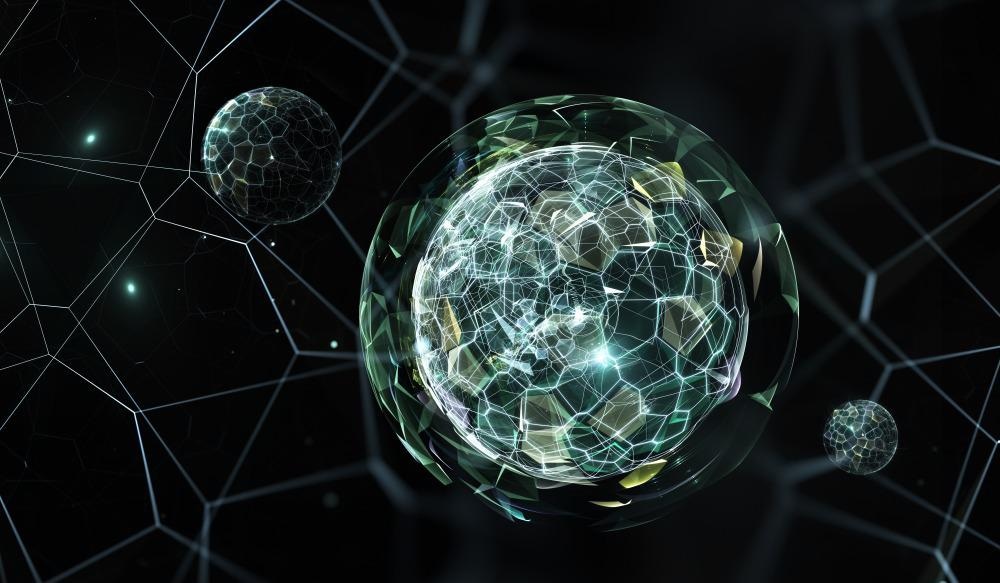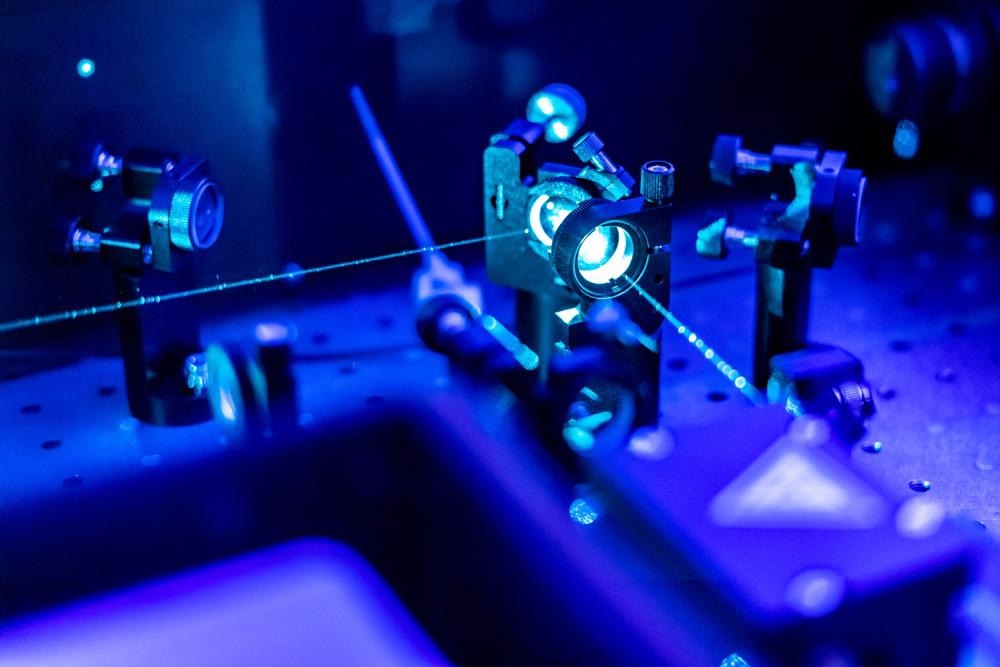This article aims to explain the current understanding of levitodynamics, and its applications, in the micro- and nano-scale arena.

Image Credit: Jurik Peter/Shutterstock.com
What Is The Field Of Levitodynamics?
Levitodynamics is a multidisciplinary field that draws on optomechanics, electromagnetics, laser technology, and other physical science topics. The study of this field has profound consequences for the areas of quantum mechanics, non-equilibrium thermodynamics, and atomic physics, to name but a few.
Experimental levitodynamics has seen a revival over the last 10 years. This is mainly due to innovative technological developments necessary to conduct the following experiments. The field explains the ability to suspend and trap micro- and nano-scale particles in a vacuum.
Scientists already possess a solid understanding of levitation in the macroscopic world. Real-world applications are currently revolutionizing the transportation sector; for example, Maglev trains make use of levitating magnets to accelerate trains around frictionless tracks at record-breaking speeds. The manufacturing sector also benefits from applicable research, with some companies building accelerators using levitating superconductors.
What Are The Techniques Involved In Trapping Particles?
The earliest examples of trapping dielectric materials using electromagnetic fields were developed and demonstrated by Arthur Ashkin in the early 1970s. Ashkin’s pioneering work would later earn him the Nobel Prize for work on optical tweezers, a direct application of trapping dielectric materials.
Further developments in theoretical physics, spanning from the 1980s to the 2010s, have allowed scientists to push the capabilities of modern technology. Experimental physicists have, over the last decade, managed to reduce the size of levitated objects from macroscopic sizes to particles nanometers in diameter.
There are three main techniques for trapping particles, each with its own advantages and disadvantages: electrical, magnetic, and optical cavity trapping methods.
CERN used a variant of the magnetic trapping technique, known as an Ioffe-Pritchard trap, in their ALPHA experiment. Scientists were able to successfully contain roughly 300 antimatter atoms for over 16 minutes—a feat previously determined to be impossible with our current understanding of modern physics.
However, the technique with the most promising outlook for success in future experiments is the optical cavity trapping method. This method describes a laser beam, operating at a frequency within the visible portion of the electromagnetic spectrum, trapping a dielectric nano-scale particle. The external electromagnetic field used must have a strong field gradient in order to generate an optical force large enough to suspend the particle within the field.
The field generated by the laser induces an approximately parabolic potential well where the particle rests. In this suspended position, the particle acts as a three-dimensional damped harmonic oscillator. This damping effect comes from air resistance. To combat damping, scientists can place the experiment in an ultrahigh vacuum.
What Are Some Of The Applications Of This Newfound Technology?
The ultrahigh vacuum removes stochastical movement from the air particles interacting with the trapped particle. The removal of unwanted interactions creates an ideal environment in which to study the internal and external degrees of freedom of the chosen dielectric particle.
Internal degrees of freedom include phonons, magnetons and excitons, whereas external degrees of freedom include rotation and motion. It is also possible for scientists to probe the particle with whatever stimulus they desire to directly observe how the particle reacts.

Image Credit: Mike_shots/Shutterstock.com
An environment in which a particle is suspended in a vacuum is characterized as having vanishing friction. Such an environment can allow for incredibly accurate sensor equipment. A lack of damping maximizes the reaction of the particle subject to an external force.
Therefore, a miniature change to the system, such as the movement of the particle or the emission of electromagnetic radiation by the particle, would easily be detected. This environment also allows for the manufacturing of precision navigation technology.
From an academic standpoint, scientists can use newfound techniques in levitodynamics to find ground-breaking new physics. In the process of trapping a dielectric particle, it is cooled down enough to observe quantum effects. Quantum mechanical effects, such as quantum superpositions, may be studied.
In a quantum superposition, particles act as if they are in two locations at once, separated by a distance comparable to its own size or greater. Before this new technique, quantum superpositions have been induced on molecules containing thousands of atoms.
Now, scientists can induce macroscopic quantum superpositions on particles containing billions of particles or more.
Furthermore, the size of the particles sit on the area of transition between classical dynamics and quantum dynamics. Directly observing particles that are within this vague boundary area will enhance the fundamental description of the domain between the classical realm and the quantum realm, a topic that is largely vacant in academic literature.
Thermodynamical models may also be scrutinized. The stochastical motion of complex systems of trapped particles can be measured and quantified to a greater degree of accuracy. Research in this field can lead to new findings that have consequences for physical models containing a non-Gaussian distribution. An underdeveloped topic in the single-particle stochastical analysis is the concept of hysteresis. With levitodynamics this can be probed, furthering our understanding of reversible and irreversible systems.
Summary
Further study of levitated systems has huge potential for both theoretical and experimental physics, with numerous possibilities for real-world applications. The search for new physics underpins everything a physicist strives for. Advancing this area of research will complement several fields of study.
A selection outlined in this article is quantum mechanics and thermodynamical systems. From an application standpoint, many believe that with this new technology we are at the beginning of a new chapter in sensor development, due to the extremely high degree of sensitivity levitated nanometer-scale particles exhibit. Increasing dependence on sensor applications in modern technology will accelerate the growth of this industry in the following decade.
References and Further Reading
C. Gonzalez-Ballestero et. al., Levitodynamics: Levitation and control of microscopic objects in vacuum, Science Journal Vol. 374, No. 6564, 2021, https://www.science.org/doi/10.1126/science.abg3027
A Ashkin, Acceleration and Trapping of Particles by Radiation Pressure, Phys. Rev. Lett. 24, 156, 1970, https://journals.aps.org/prl/abstract/10.1103/PhysRevLett.24.156
https://phys.org/news/2021-10-levitating-particles-vacuum.html, last accessed 28/10/21
Swiss Federal Institute of Technology Zurich, https://ethz.ch/en.html, last accessed 28/10/21
A. Geraci et al., Short-Range Force Detection Using Optically Cooled Levitated Microspheres, Phys. Rev. Lett. 105, 101101, 2010, https://journals.aps.org/prl/abstract/10.1103/PhysRevLett.105.101101
O. Romero-Isart, Quantum superposition of massive objects and collapse models, Phys. Rev. A 84, 052121, 2011, https://journals.aps.org/pra/abstract/10.1103/PhysRevA.84.052121
The ALPHA Collaboration, Confinement of antihydrogen for 1,000 seconds, Nature Phys 7, 558–564 (2011). https://doi.org/10.1038/nphys2025
Disclaimer: The views expressed here are those of the author expressed in their private capacity and do not necessarily represent the views of AZoM.com Limited T/A AZoNetwork the owner and operator of this website. This disclaimer forms part of the Terms and conditions of use of this website.